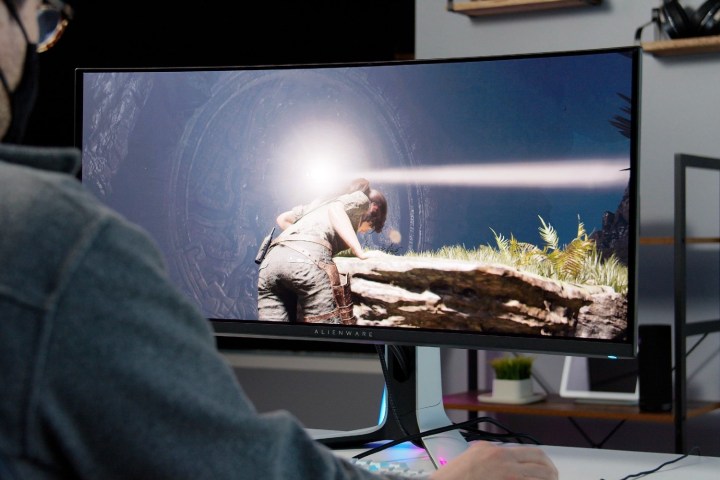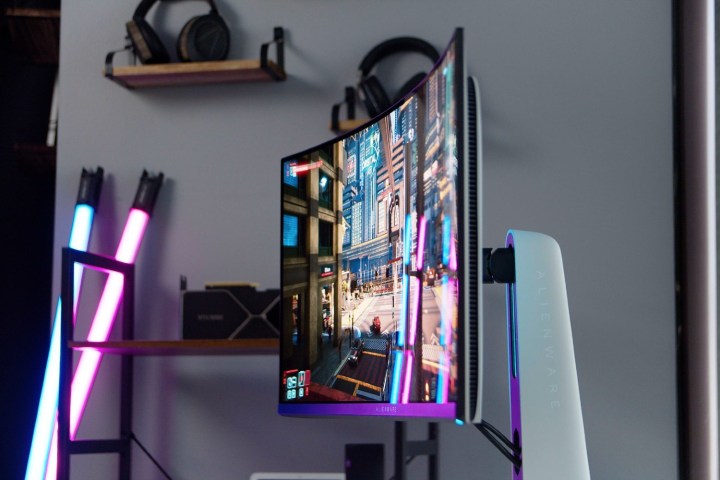
“But what about burn-in?”
It’s the first question many people have when it comes to OLED monitors. And fair enough. It’s been a huge problem in the tech of the past, which is evident even in the terms we use. After all, what we’re talking about is not the burn-in of old CRT TVs, after all. What we’re really talking about is degradation. The stationary elements of a PC desktop environment are enough to make some worried.
But are these worries justified by actual testing and hard evidence? Well, not a ton — at least not so far.
After all, the latest crop of OLED monitors have only been out in the wild for a few years now. It’s clear that these new OLED monitors don’t have a dramatic problem with burn-in that would cause problems within the first year or two, certainly. And beyond those couple of years, long-term evidence is hard to come by.
The publication RTINGS has been conducting “long-term” stress testing on OLED panels, and its most recent report reveals some interesting results — though you need to be careful about how you interpret the findings. For the test, the outlet looked at three popular OLED gaming monitors — including our beloved Alienware 34 QD-OLED. From there, the stress test involved running a 16:9 video feed of CNN on these ultrawide
That sounds bad, but even RTINGS calls out two crucial considerations. First, the report indicates that even this amount of wear wasn’t actually noticeable in normal content. Secondly, switching to full-screen mode on these ultrawide panels actually reversed some of the damage done, meaning it wasn’t actually permanent damage at this point in the testing cycle. “Since we’ve switched to full-screen mode, the difference between the sides and the center has lessened,” the video states. In addition, long cycle refreshes also helped reduce the appearance of wear.
Most importantly, this stress test is completely unlike how I can imagine anyone is actually using these monitors. Yes, if you attempt to damage these panels, they are damageable. But throw in screen savers, pixel shifting, and giving the pixels time to reset, and there’s a lot of unaccounted data points that will extend the life span of these panels even more.
I’m not saying it’s a useless test, mind you. It’s fascinating to see, and I’m curious about what further testing will show.

The only part that I disagree with are the conclusions made at the end of the video, saying that these OLED monitors should be used exclusively for gaming. That’s just not good advice — not to mention the fact that, again, this is not how people use PC
In the written report, RTINGS has a more generous conclusion about these monitors, specifically mentioning how helpful panel refreshes can be: “After forcing a panel refresh on all three before taking the month six photos, there’s very little image retention on any of the panels.”
It’s not that there are no risks of “burn-in” with OLED monitors. But as our own testing has shown, as long as you’re using a mix of content at full screen — as most people do — and maintaining the panel appropriately with pixel refreshes and screensavers, there’s not a huge reason to be afraid of OLED
Editors' Recommendations
- OLED monitors just had a major breakthrough
- It’s time to stop settling for a noisy gaming PC
- 4 gaming monitors you should buy instead of the Alienware 34 QD-OLED
- Gigabyte just upped its OLED monitor game
- I couldn’t live without this underrated monitor feature


